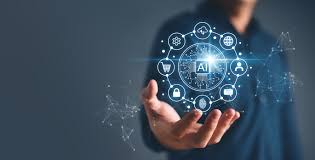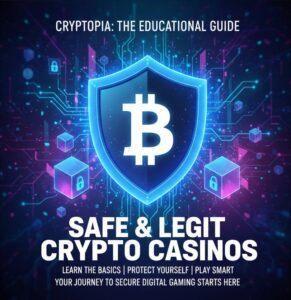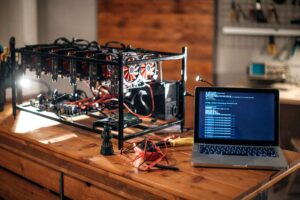Web3 Gaming Revolution: True Ownership & Play-to-Earn
The gaming industry is on the cusp of its next major evolution: Web3 gaming. Moving beyond traditional models where game developers retain ultimate control, Web3 introduces a paradigm shift. It empowers players with true ownership of their digital assets and enables new economic models like “play-to-earn.” Understanding the Web3 gaming revolution is crucial for anyone interested in the future of entertainment, digital economies, and blockchain technology. This article delves into what Web3 gaming entails, how it works, and its potential to redefine the relationship between players and games.
What is Web3 Gaming? A New Era of Ownership
Web3 gaming refers to video games built on blockchain technology. Unlike traditional games where in-game items are centrally controlled by the game publisher, Web3 games leverage non-fungible tokens (NFTs) to represent unique digital assets. This means players can truly own their characters, skins, weapons, virtual land, and other in-game items.
- True Digital Ownership: NFTs provide verifiable proof of ownership on a decentralized ledger. Players can buy, sell, or trade their assets freely outside the game’s ecosystem, often on open marketplaces. This contrasts sharply with traditional games, where players merely “license” items from the developer.
- Decentralized Economies: Web3 games often feature their own native cryptocurrencies and decentralized marketplaces. These create player-driven economies where supply and demand dictate asset values.
- Player Governance: Many Web3 gaming projects incorporate Decentralized Autonomous Organizations (DAOs), allowing token holders (players) to vote on game development, updates, and treasury management. This gives the community a voice in the game’s future.
This fundamental shift from “play-to-own” to “play-and-own” redefines player engagement and value.
How Web3 Gaming Works: Blockchain at Play
The mechanics of Web3 gaming rely heavily on blockchain infrastructure and smart contracts.
- NFTs for In-Game Assets: When a player earns or purchases an item in a Web3 game, that item is minted as an NFT on a blockchain (e.g., Ethereum, Solana, Polygon). This NFT is then stored in the player’s cryptocurrency wallet, granting them verifiable ownership.
- Cryptocurrencies for Transactions: Most Web3 games use specific cryptocurrencies for in-game transactions, rewards, and staking. Players can earn these tokens through gameplay, then trade them on exchanges for other cryptocurrencies or fiat money.
- Smart Contracts for Game Logic: The rules governing the game’s economy, item drops, crafting, and other mechanics are often encoded in smart contracts. These self-executing contracts ensure transparency and prevent manipulation by the developers.
- Interoperability (Emerging): While still in early stages, the vision for Web3 gaming includes interoperability, where assets might be usable across different games or metaverses.
This integration of blockchain ensures transparency, security, and immutability for digital assets and game logic.
The Rise of Play-to-Earn (P2E) Models
A significant driver of the Web3 gaming revolution is the “play-to-earn” (P2E) model. P2E games allow players to generate real-world value through their gameplay.
- Earning Mechanisms: Players can earn cryptocurrency or NFTs by completing quests, winning battles, breeding digital creatures, selling in-game assets, or contributing to the game’s ecosystem.
- Economic Opportunity: For many, especially in developing economies, P2E games offer a new source of income. This creates a tangible economic incentive beyond mere entertainment.
- Examples: Early pioneers like Axie Infinity demonstrated the potential of P2E, allowing players to earn by collecting, breeding, and battling digital creatures. Newer titles continue to innovate on these models.
While P2E has faced challenges (e.g., sustainability of tokenomics), it represents a powerful new dimension for gaming.
Impact on the Gaming Industry and Beyond
The Web3 gaming revolution has profound implications for developers, players, and the broader digital economy.
- For Players: It offers true ownership, potential for income, and a voice in game development. This shifts the power dynamic from developers to the community.
- For Developers: It opens new monetization avenues (e.g., royalties on secondary NFT sales) and fosters highly engaged communities. However, it also demands new skills in blockchain development and tokenomics.
- For the Industry: It challenges traditional game publishing models, encourages innovation in game design, and blurs the lines between gaming, finance, and social interaction. It also introduces new regulatory and ethical considerations around digital asset ownership and speculative elements.
Conclusion: The Future is Decentralized Play
The Web3 gaming revolution is still in its nascent stages, but its foundational principles of true digital ownership, decentralized economies, and play-to-earn models are undeniably disruptive. As blockchain technology matures and user experiences become more seamless, Web3 gaming is poised to redefine how we interact with digital worlds, creating more equitable, engaging, and economically empowering experiences for players worldwide. It represents a significant leap towards a truly decentralized digital future.
Key Focus Phrase: Web3 gaming revolution
SEO Title: Web3 Gaming Revolution: True Ownership & Play-to-Earn
Meta Description: Explore the Web3 gaming revolution, how blockchain enables true ownership of in-game assets (NFTs), and the rise of play-to-earn models redefining digital entertainment.
Tags: Web3 gaming, Play-to-earn, P2E games, Blockchain gaming, NFTs in gaming, Crypto games, Decentralized gaming, GameFi, Metaverse gaming, Digital ownership, Blockchain technology, Gaming trends, Future of gaming
Article Idea 2: Biometric Authentication
Topic: This article will explore the rise of biometric authentication (fingerprint, facial recognition, iris scan) in everyday technology, discussing its security benefits, convenience, and the privacy concerns associated with it.
Biometric Authentication: Security, Convenience & Privacy
In our increasingly digital world, securing access to devices and online accounts is paramount. Traditional passwords, while common, often fall short in both security and convenience. This has led to the rapid rise of biometric authentication. From unlocking your smartphone with a fingerprint to logging into banking apps with facial recognition, biometric methods are becoming ubiquitous. This article delves into how biometric authentication works, its compelling benefits, and the critical privacy and security considerations everyone should understand.
What is Biometric Authentication?
Biometric authentication uses unique biological or behavioral characteristics to verify an individual’s identity. Instead of something you know (a password) or something you have (a key card), it relies on who you are. These characteristics are incredibly difficult to replicate, making biometrics a powerful tool for identity verification.
There are two main categories of biometrics:
- Physical Biometrics: These are unique physical traits.
- Fingerprint Recognition: Scans the unique patterns of ridges and valleys on a person’s finger.
- Facial Recognition: Analyzes unique features of a person’s face (e.g., distance between eyes, shape of nose).
- Iris/Retina Scans: Examines the distinctive patterns in the iris or retina of the eye.
- Palm Vein Recognition: Maps the unique vein patterns beneath the skin of the palm.
- Behavioral Biometrics: These are unique patterns in how a person performs actions.
- Voice Recognition: Analyzes unique vocal characteristics.
- Keystroke Dynamics: Identifies patterns in typing speed and rhythm.
- Gait Analysis: Recognizes unique walking patterns.
These methods convert unique physical or behavioral traits into digital templates for secure comparison.
The Allure: Security and Convenience
The widespread adoption of biometric authentication stems from two primary advantages it offers over traditional methods.
Enhanced Security
Biometrics inherently offer a higher level of security than passwords.
- Uniqueness: Each person’s biometric data is unique, making it extremely difficult for an unauthorized individual to replicate.
- Difficulty to Steal: Unlike passwords, which can be guessed, phished, or brute-forced, biometric data is physically tied to the individual. While sophisticated attacks exist (e.g., deepfakes for facial recognition), they are far more complex than password theft.
- Non-Transferable: You cannot easily share or lose your fingerprint or face, unlike a password written on a sticky note.
- Multi-Factor Potential: Biometrics often combine with other authentication factors (like a PIN or password) to create robust multi-factor authentication (MFA) systems.
Unmatched Convenience
Beyond security, biometrics offer unparalleled ease of use.
- Speed: Unlocking a phone or logging into an app takes milliseconds with a fingerprint or face scan. This is much faster than typing a complex password.
- Effortless Access: Users don’t need to remember or type anything. This reduces friction and improves the overall user experience.
- Improved User Experience: The seamless nature of biometric authentication makes digital interactions smoother and more intuitive.
This combination of robust security and effortless access makes biometrics highly appealing for everyday use.
The Other Side: Privacy and Security Concerns
Despite the benefits, biometric authentication raises significant privacy and security concerns that users must understand.
Privacy Implications
- Data Storage: Where is your biometric data stored? Is it on your device (more secure) or on a remote server (less secure)? If a central database of biometric templates is breached, the consequences could be severe, as you cannot “change” your fingerprint.
- Consent and Usage: How is your biometric data used beyond authentication? Could it be used for surveillance or tracking without your explicit consent?
- Irreversibility: Unlike a password, which you can reset after a breach, your biometric data is permanent. If compromised, it’s compromised forever.
Security Vulnerabilities
- Spoofing Attacks: Sophisticated techniques like creating realistic fake fingerprints or 3D masks can potentially bypass some biometric systems.
- False Positives/Negatives: While rare, biometric systems can sometimes incorrectly identify someone (false positive) or fail to recognize a legitimate user (false negative).
- Liveness Detection: Advanced systems use “liveness detection” to ensure they are scanning a living person, not a static image or mold. However, this technology constantly evolves to counter new spoofing methods.
Best Practices for Using Biometric Authentication
To maximize the benefits and mitigate the risks of biometric authentication, users should adopt several best practices.
- Understand Storage: Know where your biometric data is stored (on-device vs. cloud). Prefer on-device storage for higher security.
- Combine with Strong Passwords/PINs: Always use biometrics as a convenient second factor alongside a strong, unique password or PIN, especially for critical accounts.
- Enable Liveness Detection: Ensure any biometric system you use has robust liveness detection features.
- Be Aware of Your Surroundings: Use facial recognition discreetly in public to avoid revealing your unlock method.
- Stay Informed: Keep your device software updated. This ensures you have the latest security patches against known vulnerabilities.
- Review App Permissions: Be cautious about granting apps access to your biometric sensors.
Conclusion: A Balancing Act
Biometric authentication offers a powerful blend of security and convenience, fundamentally changing how we access our digital lives. It provides a more robust defense against common password-related threats. However, its widespread adoption also necessitates a critical understanding of the inherent privacy and security challenges. By staying informed, choosing reputable systems, and combining biometrics with other strong security practices, users can leverage this innovative technology safely and effectively, navigating the complexities of our increasingly biometric-driven world.
Key Focus Phrase: Biometric authentication
SEO Title: Biometric Authentication: Security, Convenience & Privacy
Meta Description: Explore biometric authentication methods like fingerprint and facial recognition. Learn about their security benefits, convenience, and crucial privacy concerns for users.
Tags: Biometric authentication, Cybersecurity, Digital security, Privacy concerns, Fingerprint recognition, Facial recognition, Iris scan, Multi-factor authentication, 2FA, Online safety, Tech trends, Data protection, Identity verification, Behavioral biometrics
Article Idea 3: Smart Contracts in Real Estate
Topic: This article will explore how smart contracts, powered by blockchain, are streamlining real estate transactions, enhancing transparency, and enabling new models like fractional ownership, moving beyond traditional paper-based processes.
Smart Contracts in Real Estate: Streamlining Transactions & Ownership
The real estate industry, often characterized by complex paperwork, lengthy processes, and reliance on multiple intermediaries, is ripe for technological disruption. Blockchain technology, particularly through the application of smart contracts, offers a revolutionary path forward. These self-executing, tamper-proof agreements are streamlining transactions, enhancing transparency, and even enabling innovative ownership models like fractionalization. Understanding smart contracts in real estate is key to grasping how this ancient industry is being modernized for the digital age.
What Are Smart Contracts? The Foundation of Change
At its core, a smart contract is a self-executing contract with the terms of the agreement directly written into lines of code. It runs on a blockchain network, meaning it is immutable (cannot be changed once deployed) and transparent (all participants can view its code and execution).
- Automated Execution: Unlike traditional contracts that require human intermediaries (lawyers, notaries, banks) to enforce terms, smart contracts automatically execute when predefined conditions are met.
- Trustless Transactions: Because the code dictates the terms and execution, parties do not need to inherently trust each other or a third party. They only need to trust the code and the blockchain network.
- Transparency and Immutability: Every action and outcome recorded by a smart contract on the blockchain is permanently logged and verifiable by all network participants.
These characteristics make smart contracts ideal for complex, multi-party transactions like those found in real estate.
How Smart Contracts are Revolutionizing Real Estate
The application of smart contracts in real estate addresses many of the industry’s longstanding pain points, from efficiency to fraud prevention.
1. Streamlining Property Transactions
- Automated Escrow: Smart contracts can hold funds or property deeds in escrow. They automatically release them to the correct party once all conditions (e.g., payment received, inspection passed) are verified on the blockchain. This reduces delays and the need for traditional escrow agents.
- Faster Closings: By automating verification steps and eliminating manual paperwork, smart contracts can significantly reduce the time required to close a property deal, potentially from weeks to days or even hours.
- Reduced Intermediaries and Costs: The automation inherent in smart contracts can lessen the reliance on lawyers, notaries, and brokers for certain aspects of a transaction, potentially lowering associated fees.
2. Enhancing Transparency and Security
- Digital Title Deeds: Property titles can be tokenized and recorded on a blockchain. This creates a secure, tamper-proof, and universally accessible digital record of ownership. It reduces the risk of title fraud and disputes.
- Immutable Records: Every change in property ownership or lien is permanently logged on the blockchain. This provides an undeniable audit trail that cannot be altered.
- Fraud Prevention: The transparent and immutable nature of blockchain makes it incredibly difficult to commit fraud related to property ownership, liens, or transaction details.
3. Enabling Fractional Ownership and Tokenization
One of the most exciting developments enabled by smart contracts in real estate is property tokenization.
- Tokenized Real Estate: A property can be digitally divided into many small, tradable tokens. Each token represents a fraction of ownership in the asset.
- Democratized Investment: This allows smaller investors to participate in high-value real estate markets without needing to buy an entire property. It lowers the barrier to entry for real estate investment.
- Increased Liquidity: Fractionalized tokens can be traded on secondary markets. This provides far greater liquidity than traditional real estate, which is notoriously illiquid.
- Automated Distributions: Smart contracts can automatically distribute rental income or sale proceeds to token holders based on their ownership percentage.
This opens up new investment opportunities and changes how people access real estate markets.
Challenges and Future Outlook
Despite their immense potential, the widespread adoption of smart contracts in real estate faces several challenges.
- Regulatory Clarity: Legal frameworks for digital property ownership and smart contracts are still evolving in many jurisdictions.
- Integration with Legacy Systems: The real estate industry relies on deeply entrenched traditional systems. Integrating blockchain and smart contracts requires significant effort.
- Scalability: Public blockchains need to handle the immense data and transaction volume required for a global real estate market.
- User Education: Both industry professionals and consumers need to understand these new technologies.
Nevertheless, the trajectory is clear. As regulatory environments mature and technology advances, smart contracts will play an increasingly vital role in making real estate transactions more efficient, transparent, and accessible. They are paving the way for a more digitized and democratized future for property ownership and investment.














Post Comment